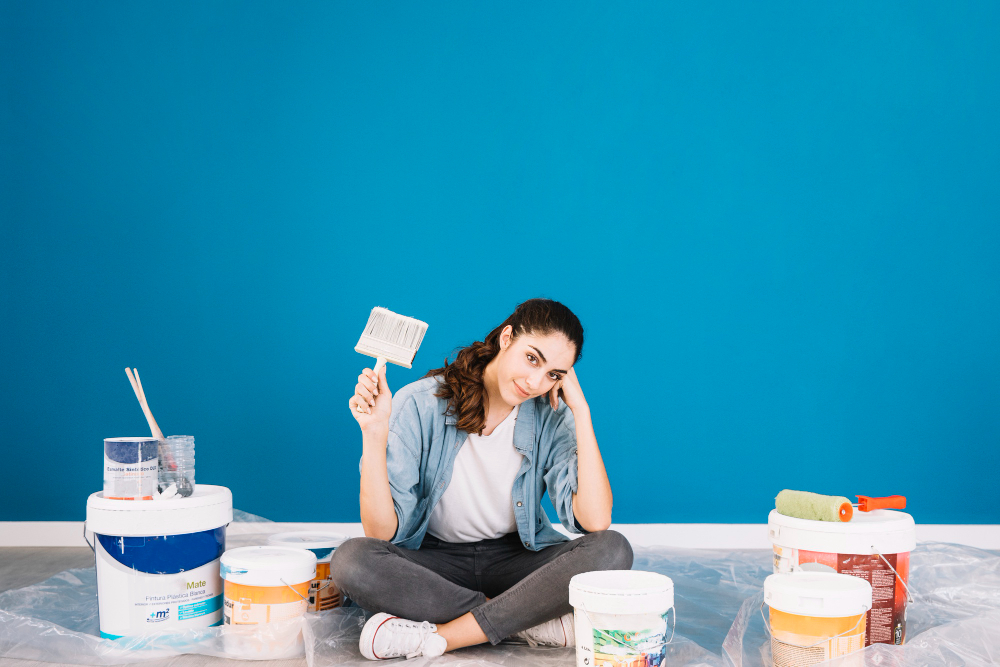

Painting the interior of your home should transform your space into something beautiful and inviting. Unfortunately, many homeowners make critical errors that leave them with streaky walls, peeling paint, and costly do-overs. Whether you're planning a DIY project or hiring professional interior painters in Apopka, FL, understanding these common mistakes can save you time, money, and frustration.
The difference between a stunning paint job and a disappointing one often comes down to preparation, technique, and attention to detail. Even small oversights can create big problems that become apparent only after the paint has dried. By learning about these pitfalls before you start your project, you'll be better equipped to achieve the professional-quality results you're after.
The most expensive mistake homeowners make is rushing straight to painting without proper preparation. Your walls need thorough cleaning, patching, and priming before any color touches the surface.
Start by washing your walls with a mild detergent solution to remove dirt, grease, and grime. Pay special attention to areas around light switches, door handles, and baseboards where fingerprints and scuff marks accumulate. Once clean, inspect every inch for holes, cracks, or imperfections.
Fill nail holes and small cracks with spackling compound, allowing it to dry completely before sanding smooth. Larger holes may require mesh patches or even drywall repair. Don't forget to caulk gaps between trim and walls—this step creates clean, professional-looking lines that separate amateur work from expert results.
Prime your walls after repairs are complete. Primer helps paint adhere properly, provides better color coverage, and prevents stains from bleeding through your new paint. Skipping primer might save an hour, but it often leads to uneven color, poor coverage, and paint that doesn't last.
Paint quality varies dramatically, and bargain-basement options rarely deliver satisfactory results. Cheap paint typically requires multiple coats to achieve decent coverage, which eliminates any cost savings. Worse, low-quality paint may fade, chip, or develop an uneven sheen over time.
Invest in premium or ultra-premium paint from reputable manufacturers. These paints offer better coverage, richer colors, and superior durability. They're also easier to clean and maintain, which matters significantly in high-traffic areas like hallways, kitchens, and children's rooms.
Consider the finish carefully as well. Flat paint hides imperfections but can be difficult to clean. Eggshell and satin finishes offer better washability while still concealing minor wall flaws. Semi-gloss works well in bathrooms and kitchens where moisture resistance is important.
The right tools make an enormous difference in your final results. Cheap brushes shed bristles and leave streaks, while low-quality rollers can create texture problems or leave lint on your walls.
Invest in high-quality synthetic brushes for water-based paints and natural bristle brushes for oil-based products. Choose the appropriate roller nap for your wall texture—smooth walls need short nap rollers, while textured surfaces require longer naps for proper coverage.
Your painting technique matters just as much as your tools. Load your brush or roller properly—too much paint causes drips and runs, while too little creates streaky coverage. Maintain a wet edge by working in manageable sections and slightly overlapping each stroke. Apply paint in a W or N pattern with your roller, then fill in with parallel strokes for even coverage.
Colors look different under various lighting conditions, and failing to consider this leads to disappointing results. That perfect blue you loved at the paint store might look purple under your living room's warm LED bulbs or appear washed out in bright natural light.
Test your chosen colors in different areas of the room and observe them at various times of day. Paint large swatches—at least 2 feet by 2 feet—on different walls to see how the color interacts with your lighting. North-facing rooms receive cooler light that can make colors appear darker, while south-facing spaces get warm light that intensifies colors.
Consider your existing lighting when selecting paint colors. Incandescent bulbs cast warm, yellowish light that enhances reds and yellows but can muddy blues and greens. LED bulbs come in various color temperatures, from warm (2700K) to cool (5000K), each affecting how your paint colors appear.
Patience is crucial for achieving professional-quality results. Rushing leads to visible brush marks, roller stipple, drips, and other imperfections that become glaringly obvious once the paint dries.
Allow adequate drying time between coats. Even if paint feels dry to the touch, it may not be ready for additional coats. Follow the manufacturer's recommendations for recoat times, which can vary based on humidity, temperature, and ventilation.
Don't remove painter's tape too early or too late. Remove it while the final coat is still slightly wet to prevent peeling, but don't wait until the paint is completely dry, as this can cause the tape to pull off dried paint along with it.
Plan your painting project when you can work methodically without interruptions. Stopping mid-wall often results in visible lap marks where wet paint overlaps partially dried areas.
Protecting your furniture, floors, and fixtures prevents damage and makes cleanup much easier. Many homeowners underestimate the amount of prep work required to properly protect their belongings.
Remove as much furniture as possible from the room. What can't be moved should be placed in the center of the room and covered with plastic sheeting or drop cloths. Don't rely on old sheets or newspapers—paint can seep through thin materials and stain your furniture.
Use high-quality canvas or plastic drop cloths on floors, and secure them with painter's tape to prevent shifting. Remove switch plates, outlet covers, and hardware rather than trying to paint around them. Cover ceiling fans, light fixtures, and HVAC vents with plastic bags.
Apply painter's tape carefully along trim, windows, and ceilings. Press the edges firmly to prevent paint from bleeding underneath, but remember that tape is only as good as the surface it's applied to—clean, smooth surfaces hold tape better than textured or dusty ones.
If you decide to hire professionals, choosing the wrong interior painters in Apopka, FL can lead to disappointing results and potential problems. Not all painting contractors deliver the same quality of work or level of service.
Research potential contractors thoroughly. Look for established businesses with proper licensing, insurance, and good local reputations. Check online reviews, ask for references from recent customers, and verify that they carry both liability insurance and workers' compensation coverage.
Get detailed written estimates from multiple contractors. The cheapest bid isn't always the best value—extremely low quotes often indicate corners will be cut on materials, preparation, or labor quality. Quality contractors typically fall within a similar price range for comparable work.
Ask about their process, materials, and timeline. Professional painters should be able to explain their preparation methods, paint selection rationale, and realistic completion schedules. Be wary of contractors who want payment upfront or seem reluctant to provide references.
Avoiding these common interior painting mistakes helps ensure your project delivers the beautiful, lasting results you envision. Proper preparation, quality materials, and careful technique make the difference between amateur and professional-quality work.
If you're looking for interior painters in Apopka, FL, contact Rusty's Painting today for free estimates. Our experienced team understands how to avoid these pitfalls while delivering exceptional results that enhance your home's beauty and value.